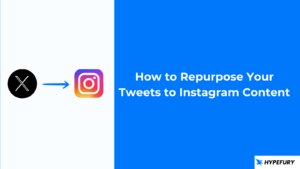Probably the question we get asked most is” What’s a good tweet? How do I improve my writing so that my tweets get more engagement?
The bad news is: creating good Tweets is an art and all art takes practice. The good news is that you can get viral tweets by just being funny and sharing something that happened to you in your life.
I’ll share with you something that could be a Tweet and then I’ll share with you something that is a tweet.
Let’s start with some examples
With less time, you do more.
With more time, you do less.
Mehhh, a bit of a platitude right?
Not something you might RT or like. Now I spent a bit more time on this and added just a little bit and turned it into this:
The Productivity Paradox
With less time, you do more.
With more time, you do less.— Yannick Veys (@Yannick_Veys) January 25, 2020
200 RT’s isn’t bad huh 🙂 The only thing I changed was I added “The Productivity Paradox” to it. That made the tweet so much more powerful. Because it’s a paradox indeed. That also didn’t alarm your “this is just a platitude” and you got excited about this tweet.
Now, why was this a good tweet?
Because I used Anaphora and Parallelism. I used WHAT?
Anaphora is the repetition of the same words or phrases. It just creates a certain vibe when you read something. Everyone on Twitter reads the words I in their mind. If their mind goes nuts (in a good way) they click the RT button.
Probably one of the most well-known uses of Anaphora is by Charles Dickens:
“It was the best of times, it was the worst of times, it was the age of wisdom, it was the age of foolishness, it was the epoch of belief, it was the epoch of incredulity, it was the season of Light, it was the season of Darkness, it was the spring of hope, it was the winter of despair.”
If you want to write good tweets you have to know techniques authors use when they write books.
The other one, Parallelism, is the use of components in a sentence that are grammatically the same; or similar in their construction, sound, meaning, or meter.
Parallelism creates rhythm, repetition, and stride. The flow of words creates persuasiveness.
Do you know what one of the most well-known uses of Parallelism is? The speech by Martin Luther King. I have a dream. He uses that part 5 times in his speech.
Let’s look at another example.
If you go with the flow you’ll always be behind.
If you go against the tide you’ll always get tired.
The start is pretty good. People think hmm what’s this. But the last sentence is bad. No rhythm. It just falls flat.
So I changed it to this:
If you swim to the side you’ll go places no one else reached.
This is the entire tweet.
If you go with the flow you’ll always behind.
If you go against the tide you’ll always get tired.Take a different path and swim to the side.
When everyone is just paddling, you’ll be hitting your stride.— Yannick Veys (@Yannick_Veys) January 28, 2020
It adds a rhyme to the tweet and that adds to the engagement factor.
@naval is probably one of the most famous creators of “Good Tweets”. He brings insight. He shines new light on old things. He makes addicting tweets that are controversial but not stigmatizing.
Here’s one of his latest tweets that did really well.
Fast, lift, sprint, stretch, and meditate.
Build, sell, write, create, invest, and own.
Read, reflect, love, seek truth, and ignore society.
Make these habits. Say no to everything else.
Avoid debt, jail, addiction, disgrace, shortcuts, and media.
Relax. Victory is assured.
— Naval (@naval) April 25, 2020
Why did this tweet do so well? Because it teaches you things you should and shouldn’t. He probably couldn’t get any more value in those 280 characters. Plus he ended with a “relax”. Like that’s even possible if you want to do all the things naval just mentioned.
Now that you have an idea how a bad tweet stands out from a good tweet, it’s time to get you some inspiration that you can tweet about.
10 ideas to tweet about
You can only grow your Twitter account when you tweet. But coming up with ideas to tweet about is pretty hard. Here are 20 examples you can use.
1. What happened in your life?
People love to read about what happened in other people’s lives and how they reacted to it or what they can learn from you. What were the great (or not so great) moments in your life and how did you cope with them? How did it change you?
I was fired from my first job. I lasted 9 months.
I quit my second job. It lasted 2 years.I’ve been an entrepreneur ever since. Already 10 years and counting.
Find your passion. Keep pursuing it relentlessly. Don’t let anyone stop you!— Yannick Veys (@Yannick_Veys) May 6, 2020
2. What did you learn today?
Do you know what TIL means? It means Today I Learned… It makes people pay attention because there’s something of value. What did you learn that you can share with your audience?
3. Engage with others
If you can’t come up with anything, just scroll through your timeline. Not in an NPC sort of way. But on a deliberate route to find tweets to engage with and to quote retweet. Make fun of someone (in a friendly way). Add something to what someone else tweeted. Add value to other people’s timelines.
4. Twist a quote
A lot of people are already (ab)using quotes. It’s become a platitude. You can still use quotes. Just make sure you add your own twist to them. Quotes usually don’t add value to people’s timelines. Everyone has read them before and they’re just plain dull.
5. Retweet someone
If you RT someone it becomes a bit your tweet too. If people engage with your retweet you get the engagement on your timeline. You’re helping the people you RT-ed but you’re also helping yourself. It’s easy to RT. Just don’t overdo it. You shouldn’t be constantly RT’ing others because people won’t really have a reason to follow you.
6. Teach people
Twitter has the possibility to infinitely spread the knowledge you spread. You don’t have to be an expert to share knowledge. Everyone starts somewhere. Do you think Kobe, Bezos, Jobs, and Musk started as experts? They wore a white belt when they started out too. Share insightful things you know and if you really want to make a lasting impression: share your knowledge via a native video on Twitter. Videos are by far the most engaging element on Twitter.
7. Read a book and tweet about it
I read about 1 or 2 books per month. The insights I get from them are also an inspiration to create new tweets. What did you learn? Do you recommend reading the book too? And why? Don’t forget to @mention the author. You might just get retweeted!
8. Reuse your old tweets
Look back on your timeline. What tweets got a lot of engagement? Redo those tweets. You can also just RT them again and see if you can get extra engagement. Or automate it by connecting your Twitter account to Hypefury. Just connect your account and we can automatically RT your best performing tweets.
9. Share your favorite … blog/podcast/Netflix show
Tell people why you love it so much and why they should also read/listen/watch it. People love getting recommendations from others. It’s a very powerful tool.
10. Create a tweet or thread about someone else’s tweets
If you repurpose other people’s tweets and mention them in them, there’s a pretty good chance they’ll RT you.
10 life lessons from @naval. A thread.
— Akhilesh (@akhileshutup) May 1, 2020
Don’t be lazy though. You really have to put in the time. A thread works best for this. Don’t mention them in the last tweet. Mention (a big account) in the first tweet.





